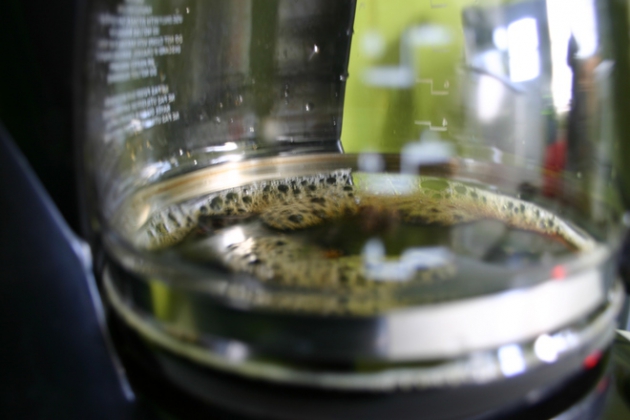With more than 30 years’ experience in the residential and commercial water treatment industry, Mark Nelson is a Class 1 Drinking-Water Operator and a CBWA (Canadian Bottled Water Association) Certified Plant Operator. As founder and president of Nelson Water in Ottawa, Mark focuses on dealing with challenging water treatment system designs for problem water. He also heads the largest water bottling plant in the city of Ottawa with a delivery network throughout the Valley.
Why Bad Water typically means Really Bad Coffee
Many Canadians love to start their daily routine with a good cup of coffee. If your cup of morning brew tastes a bit off, however, it may not actually be due to your coffee at all. You may want to actually examine the quality of your water. Even though in most areas of Canada, water has been classified as potable, it means that it is considered safe to drink (free of diseases), but it does not necessarily mean that it tastes good. Poor tasting water most often creates an off taste in cooked foods or beverages brewed with water such as coffee and tea.
The flavour of your H2O is determined by the raw materials and the protocols employed for disinfection used by your particular local water authority (chlorine, chloramines etc.) Although most Canadian water authorities aim to create a better tasting drinking water, not all have been successful.
The specific “recipe” for creating potable water, at municipal water treatment facilities, is greatly impacted by the real necessity to kill ALL bacteria and any other living organisms in it, to make it safe for human consumption. This is why a great number of municipal water systems rely on using chlorine or chloramines, but this can result in water that tastes and smells just like the water from your local swimming pool. While this water is safe to drink, it does NOT mean that it is particularly tasty.
Additionally, the tang of your water may also be compromised by a high mineral content. Minerals such as lime and iron can create hard water, but the presence of hydrocarbons and sulphur can make for downright bad tasting water. These elements tend to be present in areas known for high production of crude oil, making for a terrible smelling and tasting water supply. In fact, there are entire oil patch areas in North America, for example, where the water is undrinkable. There are tales of a salesman in Alberta (in oil patch region) who used Coca Cola to brush his teeth each morning because of how terrible the water was. Needless to say, if the water tastes this bad, then your cup of coffee is also going to taste dreadful.
The bottom line is that quality of the water from your tap must be optimal or your coffee will simply taste plain BAD. Your coffee flavour can be easily contaminated by intruding influences. Many coffee aficionados agree that if your water has any astringency or sharpness to the taste, then you should not use it to brew your coffee. Bad water will make for bad coffee.
While the cost of bottled or spring water for all of your drinking supply needs, including coffee, may be more than you want to spend, there are a number of filtration systems which can remove any unpleasant elements from your tap water, R.O. (reverse osmosis) being the most common. This can ensure that your drinking water is not only safe, but pleasant to drink, meaning that you can enjoy a fresh cup of coffee, tea or a cool clear glass of water at any time.

